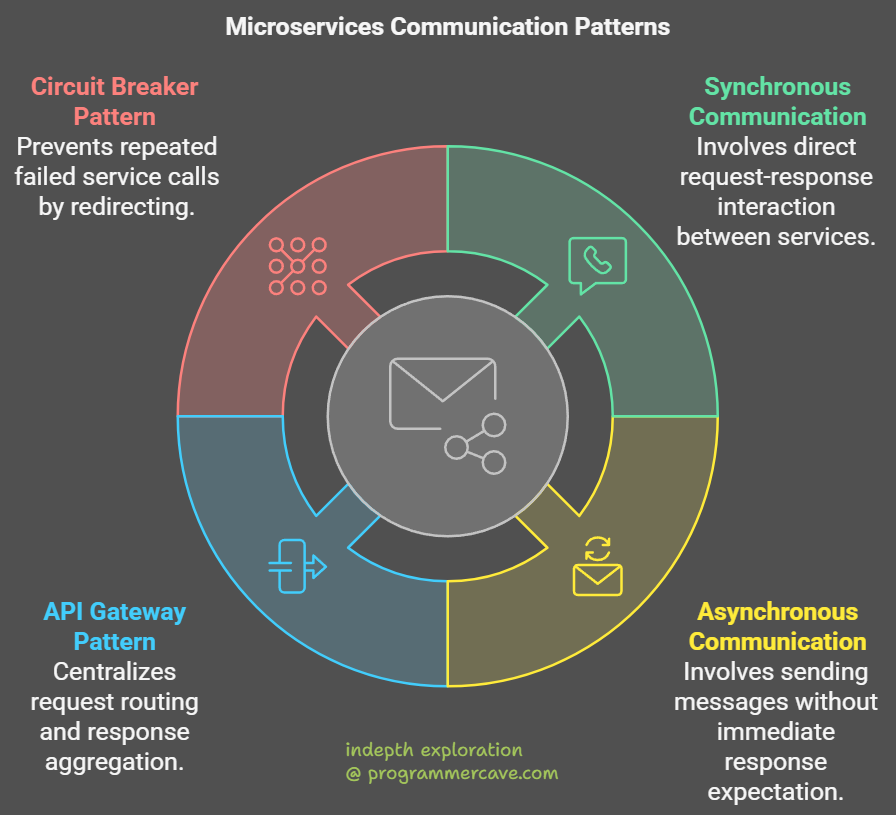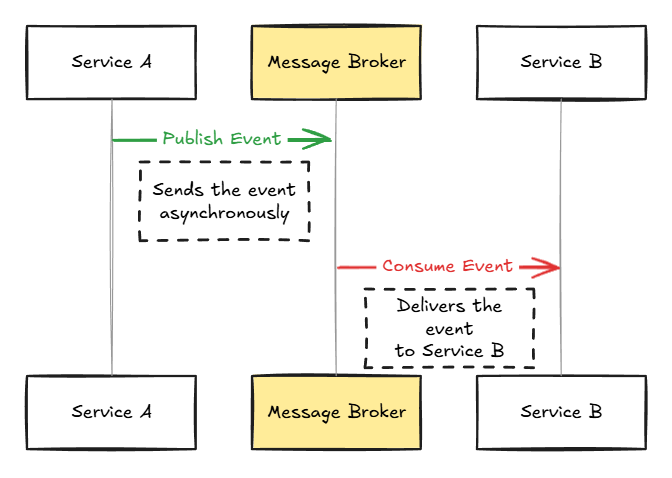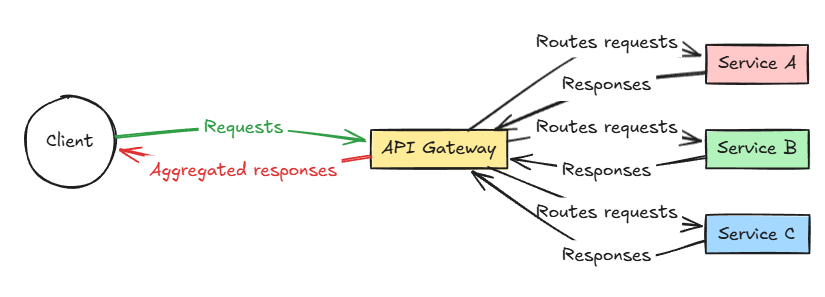Interview Question: How Microservices Communicate?
Introduction to Microservices Communication
Microservices architecture involves breaking down a large application into smaller, independent services that communicate with each other to achieve overall functionality. The way these services communicate is crucial for the system’s performance, scalability, and resilience.

Communication Patterns Between Microservices
There are two main types of communication between microservices:
- Synchronous Communication
- Asynchronous Communication
Let’s explore both in detail.
Synchronous Communication
In synchronous communication, one service sends a request to another service and waits for a response before proceeding. This is similar to making a phone call—you wait for the other person to answer.
Common Protocols for Synchronous Communication
- HTTP/REST: The most widely used protocol for microservices.
- gRPC: A high-performance RPC framework that uses Protocol Buffers for serialization.
- GraphQL: A query language for APIs that allows clients to request exactly what they need.

How It Works
- Client-Server Model: One service acts as the client, and the other acts as the server.
- Request-Response Cycle:
- The client sends an HTTP request (e.g., GET, POST) to the server.
- The server processes the request and sends back a response.
Example: REST API Communication
Imagine you have two services:
- User Service: Manages user data.
- Order Service: Manages orders placed by users.
When the Order Service needs user details, it sends an HTTP GET request to the User Service:
GET /users/{userId} HTTP/1.1
Host: user-service.example.com
The User Service responds with the requested user data:
{
"id": 123,
"name": "John Doe",
"email": "john.doe@example.com"
}
Advantages
- Simple to implement.
- Easy to debug and test.
Disadvantages
- Tight coupling between services.
- If the server is down, the client cannot proceed.
Asynchronous Communication
In asynchronous communication, one service sends a message without waiting for an immediate response. This is like sending an email—you don’t expect an instant reply.
Common Tools for Asynchronous Communication
- Message Brokers: RabbitMQ, Apache Kafka, Amazon SQS.
- Event Streaming: Publish-subscribe models.

How It Works
- Producer-Consumer Model: One service produces a message, and another consumes it.
- Message Queue: Messages are stored in a queue until the consumer processes them.
Example: Event-Driven Architecture
Imagine you have three services:
- Order Service: Creates orders.
- Inventory Service: Manages stock levels.
- Notification Service: Sends notifications to users.
When an order is placed, the Order Service publishes an event to a message broker (e.g., Kafka):
{
"eventType": "OrderPlaced",
"orderId": 456,
"userId": 123,
"items": ["item1", "item2"]
}
The Inventory Service listens for OrderPlaced events and updates stock levels. Simultaneously, the Notification Service sends an email to the user.
Advantages
- Decouples services.
- Improves scalability and fault tolerance.
Disadvantages
- More complex to implement.
- Debugging can be challenging.
Advanced Communication Patterns
Now that we’ve covered the basics, let’s explore some advanced patterns.
API Gateway Pattern
An API Gateway acts as a single entry point for all client requests. It routes requests to the appropriate microservice and aggregates responses.

Why Use an API Gateway?
- Simplifies client-side logic.
- Handles cross-cutting concerns like authentication, rate limiting, and logging.
Circuit Breaker Pattern
The Circuit Breaker prevents a service from repeatedly trying to call a failing service. Instead, it fails fast and provides a fallback response.
How It Works:
- If a service fails multiple times, the circuit breaker trips.
- Subsequent requests are redirected to a fallback mechanism.
- After a timeout, the circuit breaker tries to reconnect.
Choosing the Right Communication Style
| Factor | Synchronous | Asynchronous |
|---|---|---|
| Latency | Low | High |
| Coupling | Tight | Loose |
| Fault Tolerance | Low | High |
| Complexity | Low | High |
Best Practices for Microservice Communication
- Use Idempotent APIs: Ensure that repeated calls to the same API do not cause unintended side effects.
- Secure Communication: Use HTTPS and mutual TLS for secure data exchange.
- Monitor and Log: Implement distributed tracing tools like Jaeger or Zipkin.
- Version Your APIs: Avoid breaking changes by versioning your APIs (e.g.,
/v1/users).
Conclusion
Microservices communication is a critical aspect of building scalable and resilient systems. By understanding both synchronous and asynchronous patterns, as well as advanced techniques like API Gateways and Service Meshes, you can design robust architectures.
To become a Software Engineering expert, practice implementing these patterns in real-world projects. Experiment with tools like Docker, Kubernetes, and Kafka to see how they fit into the microservices ecosystem.